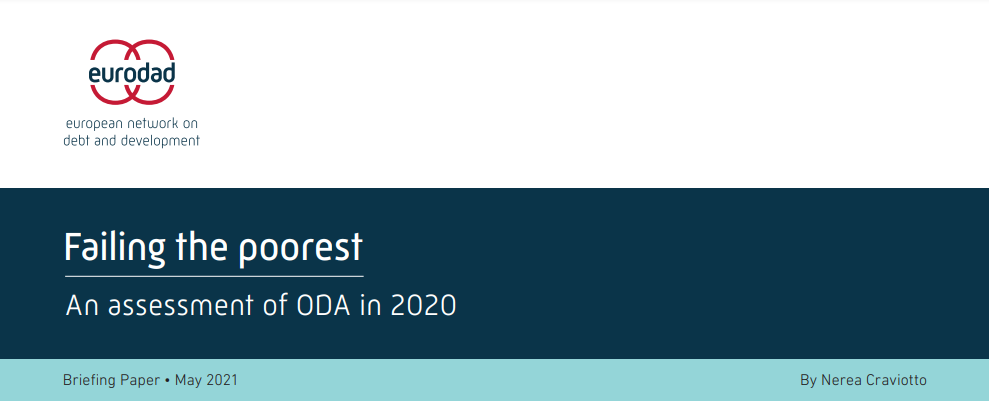By Nerea Craviotto : 27-05-2021
At the start of the Covid-19 pandemic, members of the Organisation for Economic Co-operation and Development (OECD)’s Development Assistance Committee (DAC) announced that they would strive to protect Official Development Assistance (ODA) budgets.
Since then, CSOs have been calling the donor community to raise their ODA ambitions. One year on, as the multiple impacts of this ‘once-in-a-century crisis’ became clearer, the preliminary 2020 ODA figures were eagerly awaited. On April 13 they were finally released. Unfortunately, the reality failed to live up to expectations.
While ODA levels went up, the challenge of fulfilling the 50-year-old promise of channelling 0.7 per cent of gross national income (GNI) to those countries most in need still remains. So do the promises related to commitments made on the quality of aid. As rightly pointed out by the OECD Secretary General Angel Gurria, “total ODA in 2020 equated to around a mere one per cent of the total amount countries have mobilised in economic stimulus measures to respond to the Covid-19 crisis”. He also stressed that going forward “greater efforts are needed to help developing countries with vaccine distribution, with hospital services and to support the world’s most vulnerable peoples’ incomes and livelihoods”. If 2021 does not show a change in donor strategies, the resulting message would be clear: a dual strategy of do ‘whatever it takes’ for developed countries, but just a ‘whatever we deem possible’ for developing countries.
This briefing will look in more detail at the quantity and quality-related challenges that the 2020 ODA preliminary figures show.
You can download the full report here.


Recent Comments